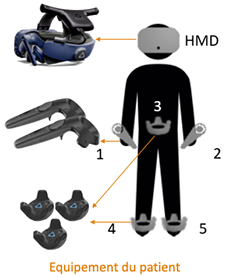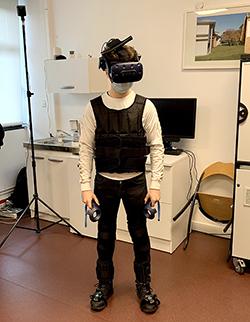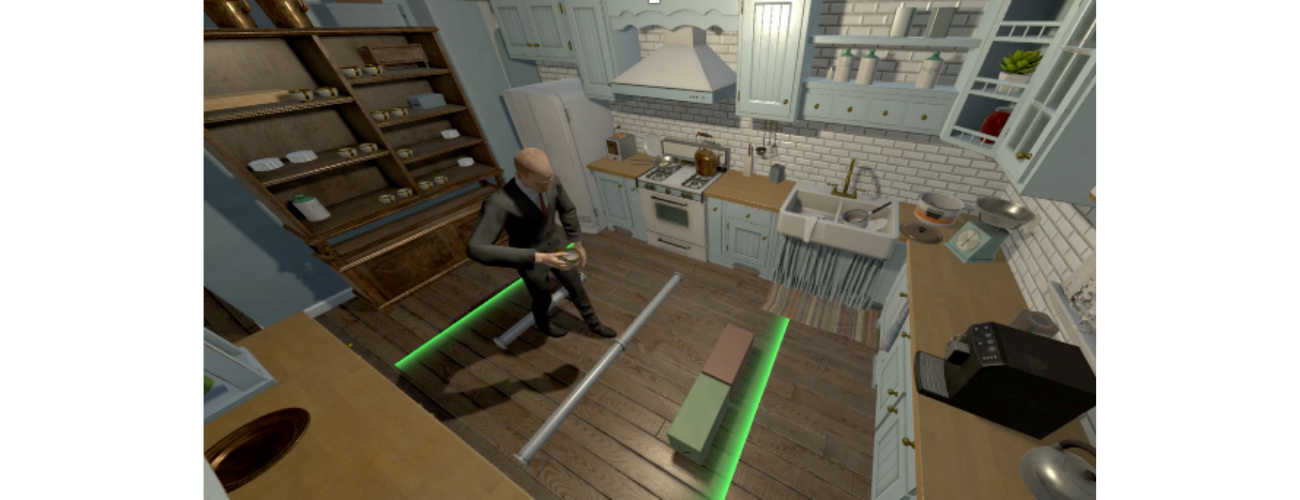Virtual reality and artificial intelligence at the service of fall prevention in the elderly
As part of their 2nd year Research Discovery Project (PIDR), two students from TELECOM Nancy, Mohammed KRIMI and Benjamin PEZET, participated in the development of a “predictive model of fall risks and explanatory factors” supervised by Fabien CLANCHÉ, Research engineer at the DevAH laboratory (Development, Adaptation and Handicap) of the Faculty of Sports Sciences.
This innovative project uses virtual reality, artificial intelligence and data science technologies to quantify and clarify the causes of falls in the elderly.
It is the subject of a collaboration between the CRAN, the Faculty of Sports Sciences, the MAIF Foundation, the OHS Lorraine (Office of Social Hygiene Lorraine) and TELECOM Nancy.
Falls: leading cause of death among people over 65 according to an INSERM study
One observation: the population is aging and falls are a major public health problem. In the elderly, falls can have very serious consequences and lead to long-term, even permanent loss of autonomy, which is why it is important to keep the most fragile people in good health. However, the multiplicity of risk factors for falls makes their prevention difficult to achieve.
The purpose of this PIDR led by the students of TELECOM Nancy was therefore to create a model for predicting the risk of falls and their causes by developing data processing algorithms.
Virtual reality and artificial intelligence to improve diagnostics
The project started in 2016 with a first collaboration with the school and the development of a first scenario to model one of the most famous fall risk detection tests, the “TUG ” (Timed Up & Go) test, timed test to measure dynamic balance in the elderly by asking them to perform a specific movement. The risk of falling is determined in part by the time taken to perform the exercise.
For the test developed here, a virtual reality scenario was co-constructed with the health personnel of OHS Lorraine and then implemented as part of an experiment in order to constitute a database and explanatory knowledge of cognitive-motor performance.


The patient is equipped with 2 controllers and 3 trackers, one at the level of the lower back and 1 at each foot.
Due to the Covid epidemic, there was no possibility of testing on real patients, which is why the tests were carried out with the wearing of a combination that simulates aging (weighted vest, weight knees and calves, etc.).
The advantage of virtual reality for this test is that this tool can be transposed anywhere and that it is “generic”: the test is always done in the same way.
At the end of the test, a sensitivity/specificity score is obtained, making it possible to detect fallers and non-fallers. The efficiency factor of the model developed here is 80 %.
Video of the experiment:
As the tests progress, the algorithm will learn thanks to the data collected (machine learning) and will be able to identify and classify several profiles of people (faller/non-faller, carrier/non-carrier of a combination of aging).
This work will make it possible to obtain new indicators and produce a decision tree that can be easily interpreted by the health practitioner for better management, adapted to each patient.
The data is hosted at the school and an API (programming interface) allows healthcare professionals to load it while being GDPR compliant.
What next for this project?
The project, funded by the MAIF Foundation and OHS Lorraine, will continue with the resumption of experimentation at OHS Lorraine in order to strengthen the accuracy of the model and refine the causes of risk.
The application potential is real: the objective would be to deploy this system on a large scale, directly in doctors’ offices to offer them a digital tool allowing them to better identify the cause of the risk of falling and proposing an appropriate “care” program.
Research Discovery Project or Interdisciplinary Project (PIDR)
This project is part of the 2nd year program of the TELECOM Nancy course.
It allows a first concrete contact with the research carried out in the laboratories of the University, in particular the LORIA , the CRAN and the IECL .
This is a project supervised by a teacher-researcher or a researcher, which includes a bibliographic research part and a programming part.
In the interdisciplinary case, the project does not necessarily take place in the laboratory and concerns aspects related to different disciplines around computer science.
Contact : Fabien CLANCHE
Find out more : https://www.fondation-maif.fr/pageArticle.php?rub=1&id=915&archive=0


